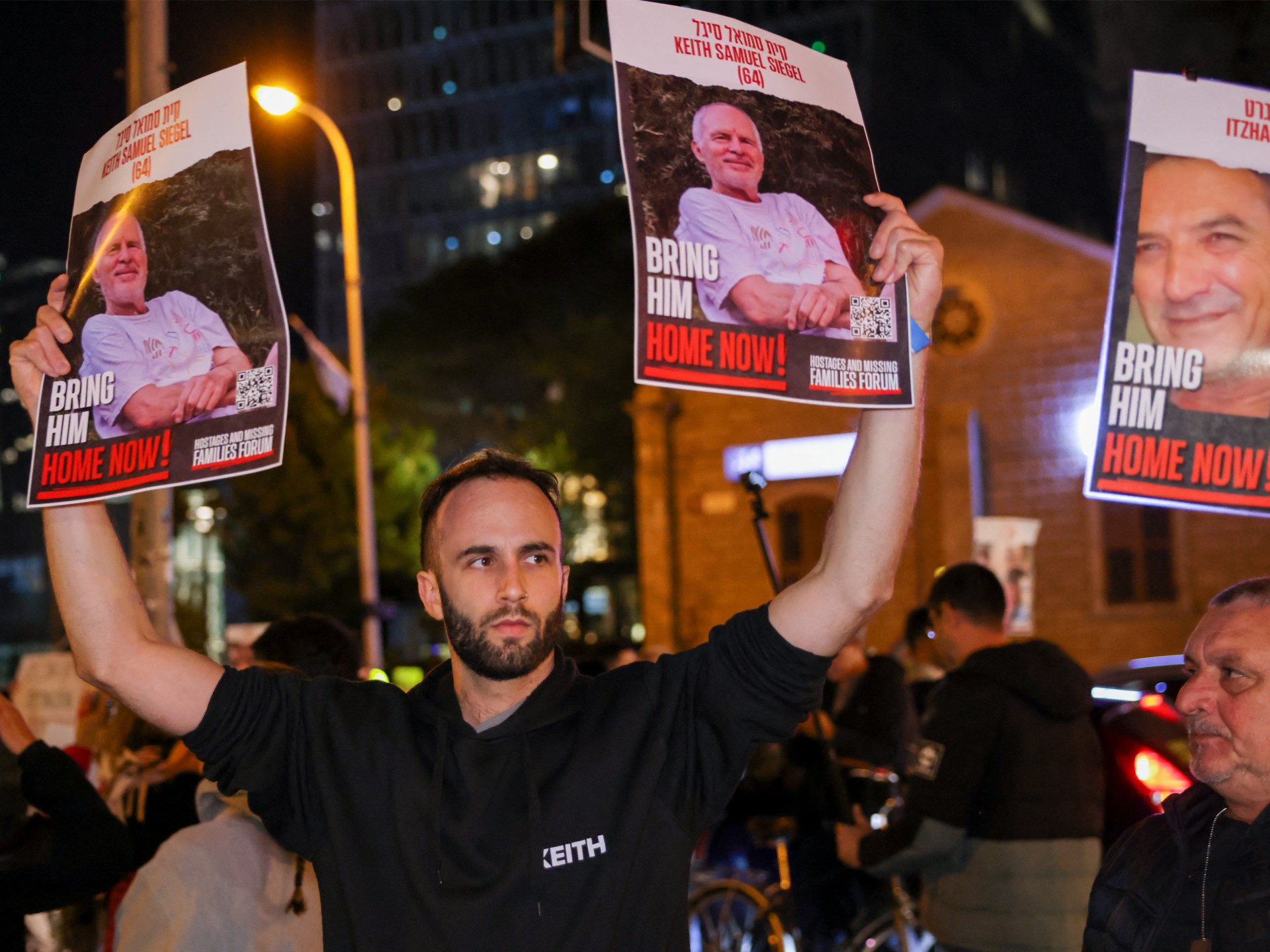Ukraine’s military chief admits ‘difficult situation’ in Kharkiv region | Russia-Ukraine war News
General Syrskii says situation in northeastern oblast ‘significantly worsened’ this week as Russian forces continue to advance.
Ukraine’s military chief has admitted his forces are facing a “difficult situation” in the northeastern region of Kharkiv, where thousands more people have fled their homes as Russian forces continue to advance.
“This week, the situation in the Kharkiv region has significantly worsened,” Oleksandr Syrskii wrote on Telegram on Sunday. “There are ongoing battles in the border areas along the state border with the Russian Federation.”
While admitting that the situation is “difficult” and Russian attackers had achieved “partial successes” in some areas, he said, “Ukrainian defence forces are doing everything they can to hold defensive lines and positions.”
The intense battles have forced at least one Ukrainian unit to withdraw, leaving behind more land to Russian forces across less defended settlements in the so-called contested “grey zone” along the Russian border.
By Sunday afternoon, the town of Vovchansk, among the largest in the northeast with a pre-war population of 17,000, emerged as a focal point in the battle.
Volodymyr Tymoshko, the head of the Kharkiv regional police, said Russian forces were on the outskirts of the town and were approaching from three directions. “Infantry fighting is already taking place,” he said. A Russian tank was spotted along a major road leading to the town, Tymoshko said, illustrating Moscow’s confidence to deploy heavy weaponry.
Evacuation teams worked non-stop throughout the day to take residents, most of whom were elderly, out of harm’s way.
At least 4,000 civilians have fled the Kharkiv region since Friday when Moscow’s forces launched the operation, Governor Oleh Syniehubov said in a social media statement. Heavy fighting raged Sunday along the northeast front line, where Russian forces attacked 27 settlements in 24 hours, he said.
The Russian Ministry of Defence said Sunday that its forces had captured four villages on the border in addition to five villages reported to have been seized on Saturday. These areas were likely poorly fortified due to the dynamic fighting and constant heavy shelling, easing the Russian advance.
Ukraine’s leadership has not confirmed Moscow’s gains. But Tymoshko said Strilecha, Pylna and Borsivika were under Russian occupation and it was from their direction the Russians were bringing in infantry to stage attacks in the embattled villages of Hlyboke and Lukiantsi.
Ukrainian President Volodymyr Zelenskyy said on Sunday that there were intense battles across parts of the region.
“Defensive battles and fierce fighting continue on a large part of our borderline,” Zelenskyy said, adding: “The idea behind the attacks in the Kharkiv region is to stretch our forces and undermine the moral and motivational basis of the Ukrainians’ ability to defend themselves.”
The gains are “significant not just because of the territory but also because in 10km (6 miles) or so they will be at a shelling distance of Kharkiv city, the second largest city in Ukraine,” Al Jazeera’s John Holman said, reporting from the Ukrainian capital, Kyiv.
“It also means that Ukraine is so stretched paper thin on different sides of the front, and it will probably have to divert soldiers from other areas and send them to the Kharkiv region,” he added.
Analysts said the Russian push is designed to exploit ammunition shortages before promised Western supplies can reach the front lines. Ukrainian soldiers said the Kremlin is using the usual Russian tactic by launching a disproportionate amount of fire and infantry assaults to exhaust their troops and firepower.
By intensifying battles in what was previously a static patch of the front line, Russian forces threaten to pin Ukrainian forces in the northeast while carrying out intense battles farther south, where Moscow is also gaining ground.
The advance comes after Russia stepped up attacks in March, targeting energy infrastructure and settlements, which analysts predicted was a concerted effort to shape conditions for an offensive.
Check out our Latest News and Follow us at Facebook
Original Source







